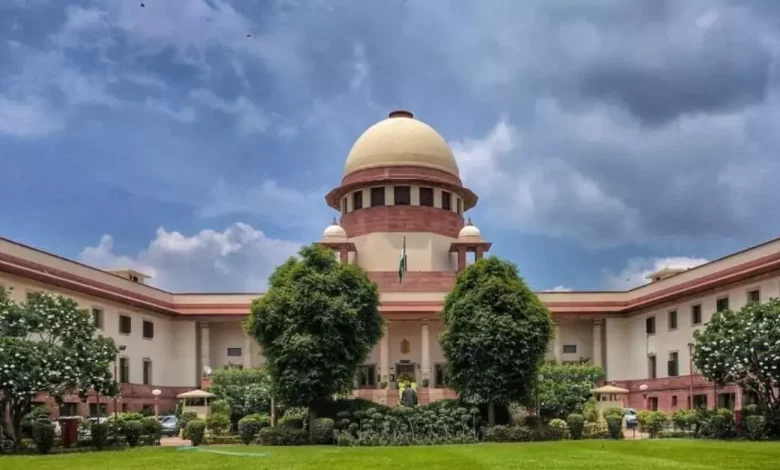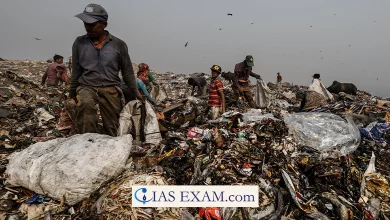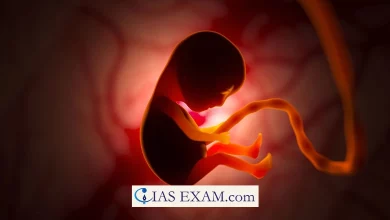Daily Current Affairs for UPSC
SC upholds repeal of J&K’s Special Status
Syllabus- Polity and Governance [GS Paper-2]

Context- The Supreme Court in a 5-0 unanimous ruling recently upheld the abrogation of Article 370 of the Constitution.
Key Highlights of the Judgement
- Interim order: The court ruled that Article 370 was only a “temporary order” to facilitate the accession of the then princely state to the Union during times of civil unrest and war.
- Presidential powers: The court upheld the president’s right to abrogate Article 370 in August 2019. The power of parliament or the president to abrogate Article 370 did not cease to exist after the dissolution of the Constituent Assembly of Jammu and Kashmir in 1957.
- The Supreme Court relied heavily on his judgment (1994) in SR Bommai Vs. Union of India, which said that the power of the president to dismiss a state government is not absolute.
- It said there should be a “reasonable link” between the emergency declaration under Article 356 and the president’s subsequent actions.
- Karan Singh Proclamation of 1949, cited by SC: The court held that Jammu and Kashmir retained no sovereignty or internal sovereignty after its accession to the Indian Union.
- The SC recalled that in November 1949, the Crown Prince of Jammu and Kashmir, Yuvraj Karan Singh, issued a declaration that reflected the “full and final surrender of [J & K] sovereignty to India”.
- Truth and Reconciliation Commission: The Supreme Court ordered the creation of a Truth and Reconciliation Commission to investigate human rights violations by both state and non-state actors in Jammu and Kashmir since the 1980s.
- Elections: Court accepts Centre’s assurance to restore Jammu and Kashmir union ‘at the earliest’.
- It directed the Election Commission of India to hold parliamentary elections in Jammu and Kashmir by September 30, 2024.
Special position of J & K: Historical connections
- Article 370 was an essential provision of the Indian constitution which gave a special status to the former state of Jammu and Kashmir.
- In March 1948, the then Maharaja Hari Singh of Kashmir appointed a caretaker government in the state with Sheikh Abdullah as the Prime Minister.
- In July 1949, Sheikh Abdullah and three other colleagues joined the Constituent Assembly of India and later negotiated a special status for Jammu and Kashmir.
- This led to the adoption of Article 370
- It gave Jammu and Kashmir some autonomy, such as giving the state its own constitution, a separate flag and limited jurisdiction over the central government.
- Article 35-A: Article 35A of Article 370 of the Constitution was launched in 1954 by Presidential Order to continue the old provisions of the Territorial Ordinances. The article allowed the parliament of the states of Jammu and Kashmir to define the permanent residents of the territory.
Why did J & K get a special status?
- Jammu and Kashmir was given a special status due to the circumstances that led to its accession to India shortly after independence. Sandwiched between the two new kingdoms of India and Pakistan, the nation did not immediately make a decision about which country to join, as it had significant economic and cultural ties to both.
- In August 1947, Maharaja Hari Singh offered to sign “halt agreements”, which meant that the existing agreement would continue on all issues with both Pakistan and India.
- By October 1947, however, the Maharajas were facing regular military attacks from Pakistan.
- In a letter to the Governor-General of India, Lord Mountbatten, dated 26 October 1947, he asked for India’s help, noting that “of course they cannot send the help requested” without his state acceding to Indian rule. That’s why he added “registration document” to the letter.
- However, it was not absolute. It specified the matters on which the Dominion Parliament could legislate for Jammu and Kashmir, but the rest of the powers remained with the State.
- The topics were defense, foreign policy and communication.
Abrogation
- On 5 August 2019, the president issued the Constitution (Application to Jammu and Kashmir) Order, which inserted a new provision, Article 367(4) into the Constitution of India. It replaced the expression “State Legislative Assembly” with the expression “State Constituent Assembly” in the provision of Article 370(3).
- On the same day, Parliament repealed Article 370 and passed a proposal to reorganize the state of Jammu and Kashmir.
- The former state was divided into two Union Territories – Jammu and Kashmir and Ladakh.
Government point of view
- The decision to cancel Article 370 was based on the government’s belief that it prevented the integration of Jammu and Kashmir with the rest of India and limited the development of the region.
- It is said to promote socio-economic development, equal rights and opportunities and ensure better governance of the region.
- They also argued that it would facilitate the implementation of national laws and programs that were not fully implemented in Jammu and Kashmir earlier.
Criticism
- Critics of the repeal expressed concerns about the impact of the decision on the special status and identity of Jammu and Kashmir, as well as its potential impact on the autonomy and demographic makeup of the region. The constitutionality of that move was debated.
Conclusion and journey ahead
- The abrogation of Article 370 was the culmination of a “gradual and cooperative exercise” between the Center and the state over the past 70 years to bring Jammu and Kashmir into the Union.
- The aim of the integration process was to make the rights and obligations enshrined in the Constitution of India fully applicable to the people of Jammu and Kashmir.
- Important changes have taken place in the administration, governance and socio-political dynamics of the region.
- The effects and consequences of the cancellation are still unfolding.
Source: Indian Express





.png)



